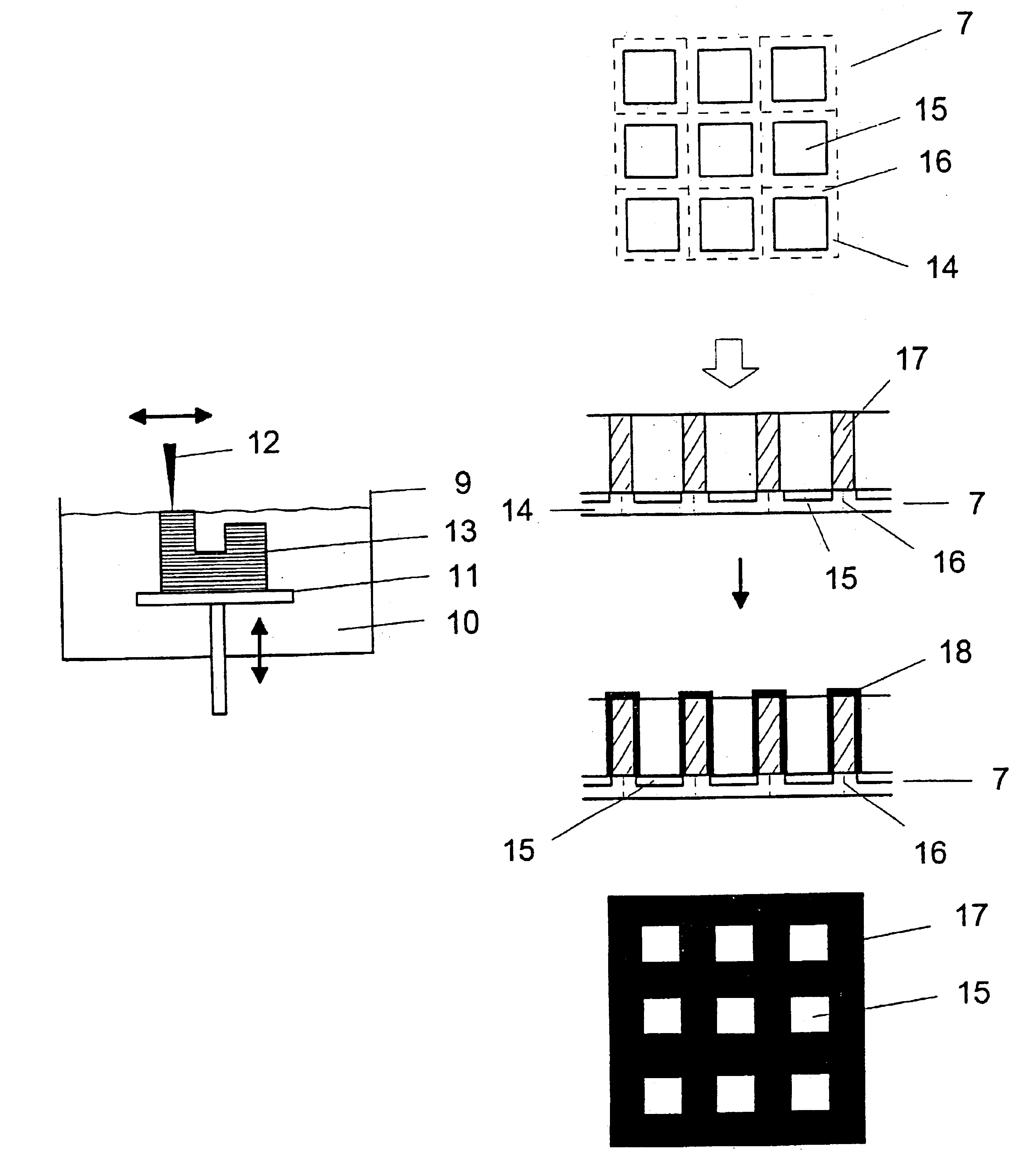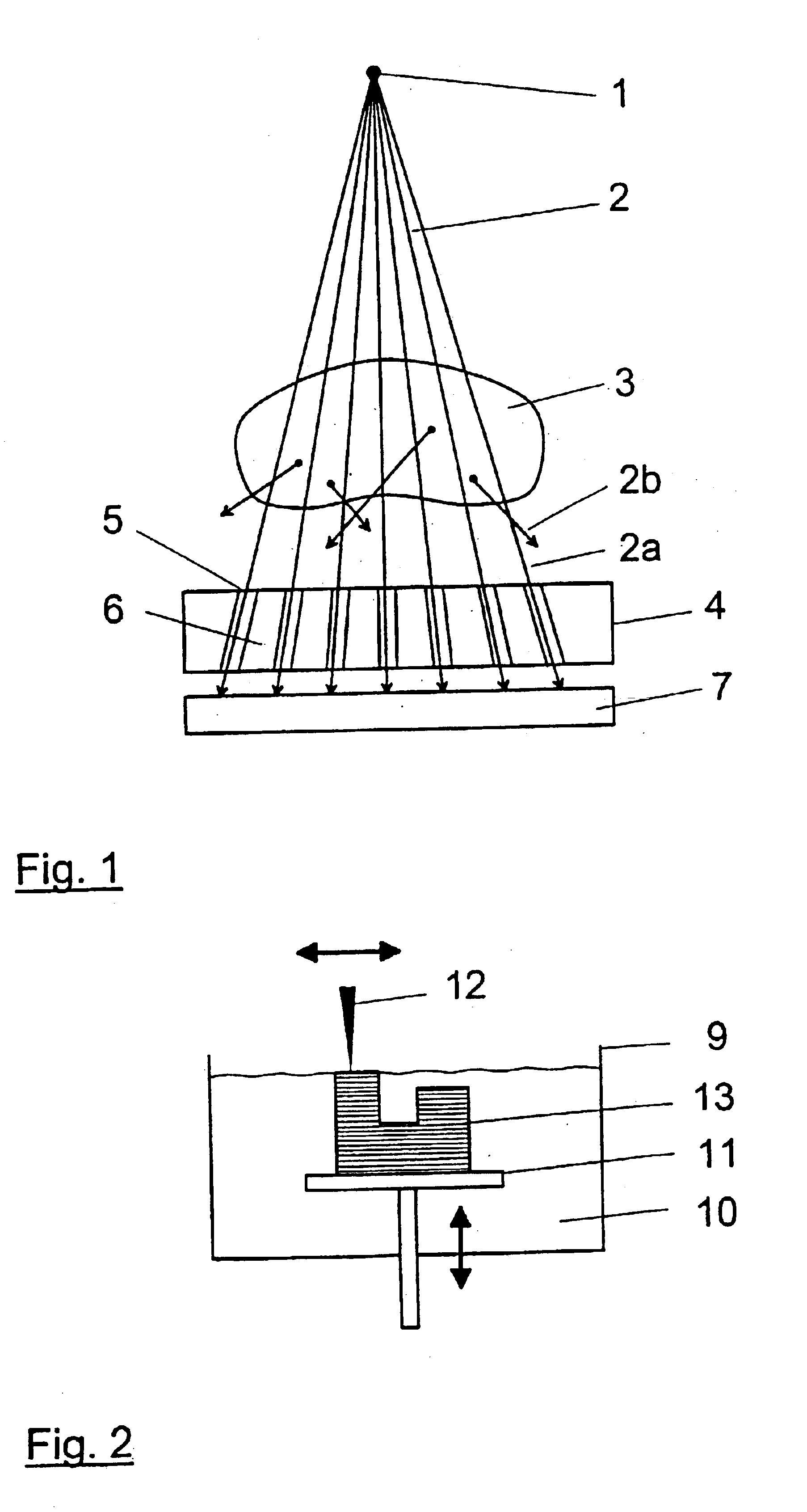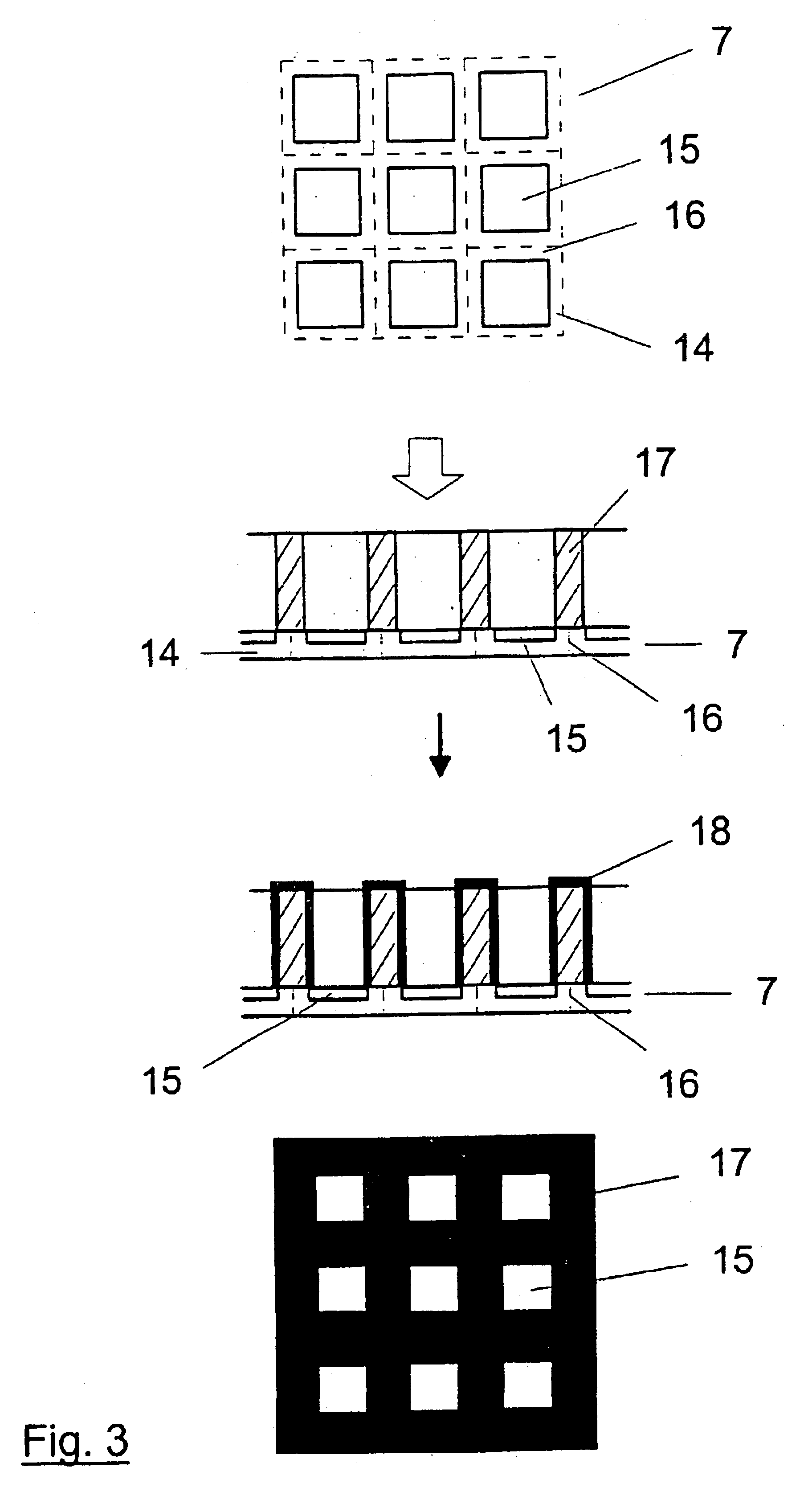X-ray detector with an applied stray radiation grid, and method for applying a stray radiation grid to an X-ray detector
a radiation grid and detector technology, applied in the direction of diaphragm/collimeter handling, originals for photomechanical treatment, instruments, etc., can solve the problem of reducing the recognizability of fine contrast differences, additional noise, and noticeable loss of primary radiation at the edges of image exposure, so as to achieve high detective quantum efficiency
- Summary
- Abstract
- Description
- Claims
- Application Information
AI Technical Summary
Benefits of technology
Problems solved by technology
Method used
Image
Examples
Embodiment Construction
The typical relationships in an X-ray image exposure of a subject 3 in X-ray diagnostics are schematically shown on the basis of FIG. 1. The subject 3 is situated between the tube focus 1 of an X-ray tube, which can be considered as an approximately punctiform X-ray source, and a detector surface 7. The X-rays 2 emanating from the focus 1 of the X-ray source propagate on a straight line in the direction of the X-ray detector 7 and thereby penetrate the subject 3. The primary rays 2a that penetrate the subject 3 on a straight line proceeding from the focus 1 and which strike the detector surface 7 produce a topically resolved attenuation value distribution for the subject 3 on the detector surface 7. Some of the X-rays 2 emanating from the X-ray focus are scattered in the subject 3. The scattered rays 2b that thereby arise do not contribute to the desired image information and considerably degrade the signal-to-noise ration when they strike the detector 7. A stray radiation grid 4 th...
PUM
 Login to View More
Login to View More Abstract
Description
Claims
Application Information
 Login to View More
Login to View More - R&D
- Intellectual Property
- Life Sciences
- Materials
- Tech Scout
- Unparalleled Data Quality
- Higher Quality Content
- 60% Fewer Hallucinations
Browse by: Latest US Patents, China's latest patents, Technical Efficacy Thesaurus, Application Domain, Technology Topic, Popular Technical Reports.
© 2025 PatSnap. All rights reserved.Legal|Privacy policy|Modern Slavery Act Transparency Statement|Sitemap|About US| Contact US: help@patsnap.com



